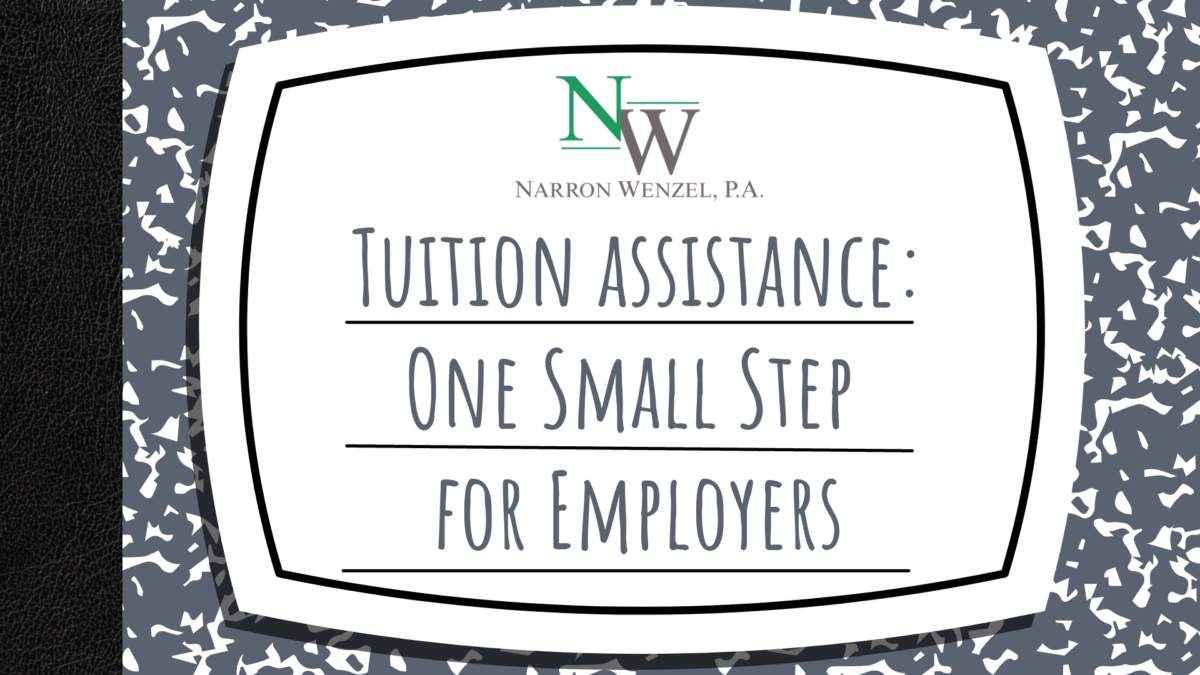
Tuition Assistance: One Small Step for Employers
Yikes, we are all going to be replaced by robots! Many experts say it’s so. Kurt Vonnegut even predicted it back in 1952 in his novel Player Piano. The prognostications are even dire for the medical and legal professions as artificial intelligence is used more and more to absorb and analyze massive amounts of data.
However, elimination of some jobs makes way for new jobs. Furthermore, employers may be wary of a wholesale out with the old, in with the new paradigm shift.
The challenge is figuring out how to retool a labor force that is partly aging, partly ill-prepared for how work is done, and how it will be done, as the 21st century unfolds. One collaborative way of updating and improving human skills is for employers to allow employees to go back to school, funding the endeavor in whole or in part with a tuition assistance program as an employee benefit.
The concept of tuition assistance has a venerable history. The Greatest Generation was educated in large part under the GI Bill after World War II. The beneficiaries, service people returning from active duty in WWII, were key instruments in the ascendant American economy of the 1950’s and 1960’s. The GI Bill paid their tuition and living expenses so that they could finish high school, get a college degree, or obtain training at vocational and training schools. It was a great success for the individuals and for the American economy.
On a smaller scale, but still potentially mighty, the Internal Revenue Code incentivizes a similar benefit. Section 127 of the Internal Revenue Code excludes from the employee’s gross income up to $5,250 of educational assistance furnished by the employer per calendar year.
The tuition assistance must be provided under an “Educational Assistance Program,” IRC §127(b), which involves having a written plan promulgated by the employer for the exclusive benefit of the employer’s employees. The plan must be nondiscriminatory, that is, it may not favor highly compensated employees. There are also limits on how much assistance is afforded to owners and shareholders of the employer.
The “educational assistance” must also fit within a strict definition, including tuition, fees, books, supplies, and equipment. Excluded from the definition are tools or supplies that may be retained by the employee after completing the course of study, as well as meals, lodging or transportation. Also excluded are educational expenses for courses in sports, games, and hobbies.
Until December 31, 2025, student loan repayment assistance is a qualified educational expense. This addition to Section 127 was part of the CARES Act, which (the addition) got a five-year extension from 2021 to 2025.
The amount paid by the employer may be deductible as a Section 162 business expense if it is for training that maintains or improves the employee’s skills in his or her current job or if it is necessary for the employee to maintain his or her salary level. Also deductible are educational expenses required by law. Nondeductible, however, are expenses paid for an individual to attain the minimum level of education required to qualify for his or her present job.
So, one small step for employers may be a giant leap for employees who are proactive about maintaining their relevancy in this 21st century version of “Modern Times.” In fact allusion to the 1936 Charlie Chaplin movie is a reminder that the challenge of machinery to human beings has been an inescapable constant now for over eighty years, nay, 200 years if we look back to the Luddite movement.
For an excellent article on robots, machine learning, and artificial intelligence in the workplace, the author highly recommends “Two Myths about Automation,” by Professor Barry Eichengreen, published in the December 18, 2017 issue of Barron’s. Professor Eichengreen is also a proponent of giving employers tax credits for the cost of providing lifelong learning to their employees.
For advice about the tax treatment of tuition assistance on both sides of the employer-employee equation the author also recommends Narron Wenzel lawyers Matt McGonagle (mmcgonagle@narronwenzel.com) and Rachel Mills (rmills@narronwenzel.com), both of whom hold the LL.M. degree in tax law.
